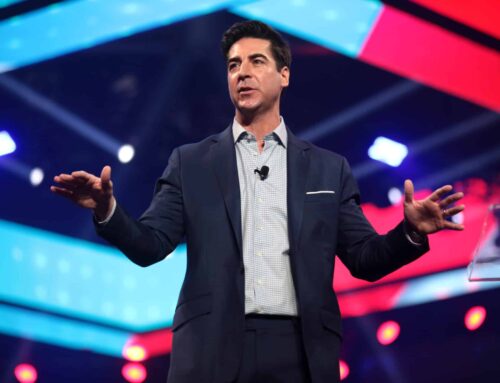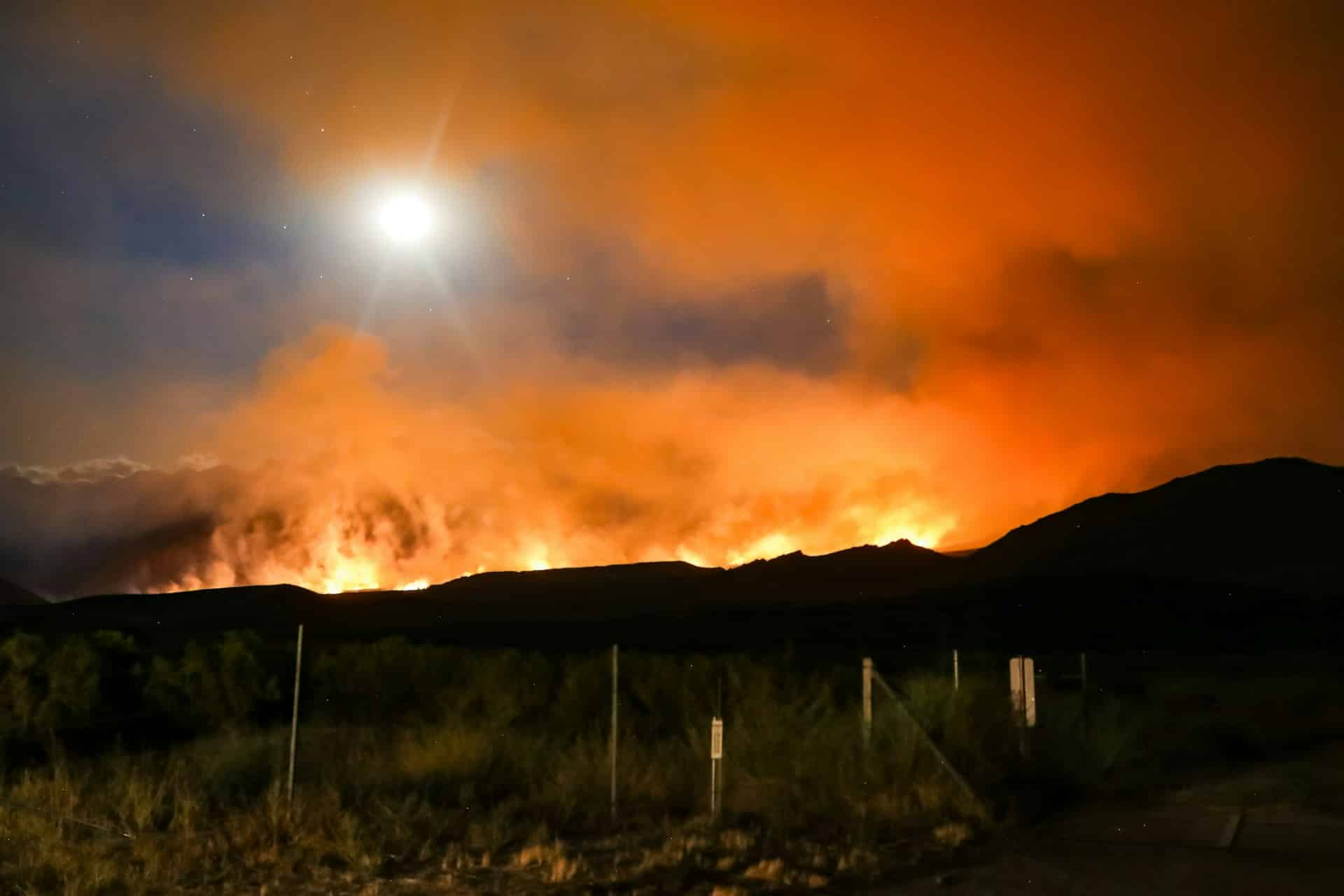The budget deficit for 2022 was $1.4 trillion. That’s half of the $2.8 trillion it was in 2021. In this episode, TCS President Steve Ellis and Senior Policy Analyst Josh Sewell break down the Congressional Budget Office Report on the FY22 Federal Budget Deficit – what it means, what isn’t in it, and what is looming.
Listen here on Apple Podcasts
Episode 31: Transcript
Announcer:
Welcome to Budget Watchdog All Federal, the podcast dedicated to making sense of the budget, spending and tax issues facing the nation. Cut through the partisan rhetoric and talking points for the facts about what’s being talked about, bandied about and pushed in Washington. Brought to you by Taxpayers for Common Sense. And now the host of Budget Watchdog AF, TCS President Steve Ellis.
Steve Ellis:
Welcome to all American taxpayers seeking common sense, you’ve made it to the right place. For over 25 years TCS, that’s Taxpayers for Common Sense, has served as an independent nonpartisan budget watchdog group based in Washington DC. We believe in fiscal policy for America that is based on facts. We believe in transparency and accountability because no matter where you are in the political spectrum, no one wants to see their tax dollars wasted. But you know what a budget watchdog always wants to see?
Josh Sewell:
A fresh Congressional Budget Office report on the fiscal 2022 federal budget deficit.
Steve Ellis:
Hello Josh. Jumping in a bit early there my friend. But yes, a fresh Congressional Budget Office report on the fiscal 2022 federal budget deficit.
Josh Sewell:
And joining you, Steve Ellis, the president of Taxpayers for Common Sense to explain what the CBO report means, what isn’t in it and what’s looming is me, Josh Sewell, TCS Senior Policy Analyst.
Steve Ellis:
Right. Wow. Is this some sort of podcast coup?
Josh Sewell:
No. Well, not exactly. Just very eager to cut the [inaudible 00:01:46] and get down to some serious budget watchdoging.
Steve Ellis:
Fair enough. Giddy up.
Josh Sewell:
Okay. Budget Watchdog AF faithful, here’s what we know now. We did it. The budget deficit for 2022 was $1.4 trillion. Pop the champagne.
Steve Ellis:
Wait, what?
Josh Sewell:
I know. It’s hard to believe. $1.4 trillion. Pat yourself on the back Steve. That’s half of the $2.8 trillion it was in fiscal year 2021.
Steve Ellis:
Sure it’s half, but $1.4 trillion is still $1.4 trillion. That’s a lot of money.
Josh Sewell:
In nominal terms, but with inflation at a 40 year high, $1.4 trillion is like 840 billion in 2001. And that’s the last time the federal government ran a budget surplus. So it seems like a win.
Steve Ellis:
The federal budget surplus, I remember that. Let’s have a moment of silence for the budget surplus. So I think I see what’s happening. I’m all for being a budget optimist, but this is recency bias negative conditioning. In fiscal year 2021, the deficit was 2.77 trillion, that’s after 2020 chock full of COVID 19 spending, which was $3.1 trillion. So I could see why $1.4 trillion feels better. But is it really?
Josh Sewell:
All right, you got me. I am trying to put a positive spin on what’s still a rather bleak or even depressing report.
Steve Ellis:
Not to depress our listeners further, but let’s dig into the numbers and see what’s there. First, please remind folks what we are looking at.
Josh Sewell:
So the report we’re discussing is called the Monthly Budget Review, and it’s from the Congressional Budget Office.
Steve Ellis:
And CBO is the nonpartisan arm of Congress tasked with keeping track of projected cost of legislation, the status of the deficit and other fiscal matters facing Congress in the nation. They are the official scorekeeper for Congress. They do a monthly budget review, and this is the one from September.
Josh Sewell:
And also a few times a year, CBO actually does a very extensive update and provides really detailed tables and a lot of narrative updating assumptions about inflation, interest rates, economic conditions, expected spending on federal programs, you name it. And those are called baseline updates and those are really, really fun. And they’re called the baseline because they are the base, the official numbers or starting line that CBO uses in projecting cost or savings from legislation.
Steve Ellis:
So kind of like a formal performance review.
Josh Sewell:
Exactly. And the monthly budget reviews, they’re more like the federal budgetary equivalent of a little chat at the cubicle.
Steve Ellis:
But of course this one coming at the end of the fiscal year means that we got the fiscal year 2022 numbers since September 30th is the end of the fiscal year. So looking a little bit further into this, how are things?
Josh Sewell:
Well, the deficit is in fact down and CBOC’s receipts that is federal revenue mostly from various taxes going up $850 billion in 2022 compared to fiscal year 2021. At the same time spending is down nearly $550 billion.
Steve Ellis:
That doesn’t sound too depressing. So what gives?
Josh Sewell:
Well first, almost all of that reduction in spending is because we aren’t doing the unprecedented kind of spending we did for COVID-19.
Steve Ellis:
We’re no longer sending those recovery rebates, the checks or direct deposits sent to basically everyone has stopped. The Small Business Administration isn’t throwing money out the door and the tight labor market has seen unemployment go down and costs as well.
Josh Sewell:
To the tune of $359 billion less for unemployment because again, fewer people are unemployed. And importantly, those expanded pandemic benefits expired. You throw in without those recovery rebates, even with slightly higher spending on some other tax credits, things like the earned income tax credit or the child tax credit, the overall cost of refundable tax credits went down $486 billion.
Steve Ellis:
Just to be clear, the earned income tax credit and the child tax credit or two different refundable tax credits, correct?
Josh Sewell:
Right. Yeah. There’s dozens of refundable tax credits, but the overall pot of those, the cost went down $486 billion.
Steve Ellis:
So I think you could take that less COVID spending across other programs. And I see where you could save a lot of money, at least in Washington terms. But that’s the nature of emergency spending. It’s supposed to go up when there’s an emergency and go down when the emergency moves into recovery instead of response.
Josh Sewell:
And that’s where we are. I mean, for the most part we’ve adjusted to a new COVID reality. I’m not going to say we’re post COVID because there’s clearly a lot of cases going on, but the adaptations are there. So of course we are spending less because we did some unprecedented things in response and now we don’t have to do that kind of unprecedented response.
Steve Ellis:
Gotcha. And so then we’re back on reactive posture and ready to respond if need be. All right, then shifting to the other side of the ledger, then there are also these increases in receipts. Where is that revenue coming from?
Josh Sewell:
It’s from that churning economic recovery for the most part. So the economy never ran into recession in fiscal year ’22, at least not by most measures, and certainly not by the numbers that are in the federal budget. So individual income taxes, they were up 29% year over year. Corporate taxes, 13%. Payroll, employers refilling unemployment compensation fund, all those excise taxes on everything from tobacco to alcohol and whatever else, rolled them all together and you see a 21% increase in tax revenue in 2022 compared to 2021.
Josh Sewell:
You’re listening to Budget Watchdog All Federal, the podcast dedicated to making sense of the budget spending and tax issues facing the nation. I am not your host, TCS President Steve Ellis, he will continue now with me, Josh Sewell as I turn towards the lame duck.
Steve Ellis:
It seems a little early to get into that.
Josh Sewell:
Is it ever too early? Well, I mean we will need to save a whole podcast to go over all that this Congress will need to do post-election. But there are some things that could occur in the lame duck session or early next Congress that throw even more cold water on any sort of rosy view of a smaller deficit.
Steve Ellis:
You don’t even have to wait for the lame duck, the costs are coming in now from inside the report and it’s the student loan forgiveness.
Josh Sewell:
You got it. Whether you like it or not as far as a sticker shock, the biggest thing in this report was that the monthly deficit for September was $431 billion. That’s just in September. That’s 366 billion more than the deficit was for the month of September in 2021. That’s huge. What could’ve happened? Well most of that is because of the Biden administration’s decision to forgive student debt. Under accounting rules that the CBO has to follow that full cost is accounted for when it was announced, so in August and into September just before the fiscal year ended.
Steve Ellis:
Got it. That’s kind of a September surprise from a budgetary standpoint, but it won’t be the last will it Josh?
Josh Sewell:
Exactly. And this is where the report gets depressing for a little bit of what’s not in the report. When CBO did their baseline update, the last one was in May, they projected a deficit of only $1 trillion. So, to be rosy about it, this is actually a $400 billion increase in the projected deficit and next year’s 2023 was supposed to be $908 billion, but we’ve already adjusted up $400 billion. The idea that we’re going to have a $908 billion, it seems not likely to happen. So, it just seems to me that this $1.4 trillion deficit that it appears we had in 2023, because technically it could go up and down a little bit when they get a few more numbers, this could be the high water mark or I guess low water mark for the foreseeable future.
Steve Ellis:
Gotcha, gotcha. We recognize that we’re unlikely to go into surplus. And then actually in 2001 it was a technical surplus, it was a unified budget surplus, meaning that the excess receipts from social security and Medicare at that time were covering over an on budget deficit of discretionary spending. But the whole point is that you try to shrink the deficit as a percentage of GDP, you grow the economy and then we don’t have more than 100% our debt, the accumulated deficits of our nation’s history, isn’t more than actually our annual GDP, which it is right now.
Steve Ellis:
So what are some of the things, just teasing ahead a little bit that we see on tap for this 117th congress before they leave town?
Josh Sewell:
You never know, maybe they’ll do something before the election, but in reality most of this is going to happen after the election. Exactly what they tackle and what they don’t tackle will depend on who wins, who’s going to be, if Republicans take over the House. If they take over the House and Senate, it may change the way people do things. But clearly one thing that’s going to happen is there’s already a $33 billion disaster supplemental request coming out of Senator Marco Rubio in Florida.
Steve Ellis:
Yeah, I saw that yesterday.
Josh Sewell:
And that’s just a starting point. I mean, you’ve been doing this longer than I have, have you ever seen a disaster supplemental that got smaller the longer it was out there?
Steve Ellis:
No. No. I mean certainly there all of a sudden becomes, well, there’s my issue or my other disaster and I haven’t looked into Senator Rubio’s. I don’t know if it really deals with Puerto Rico and Fiona. And so then you have the Alaska Delegation demanding funds as well and from typhoon and earthquake and such. And so, yeah, it’s all going to kind of attract some flies.
Josh Sewell:
And even if most of the spending is legitimate, the fact is we still don’t know, have a full accounting of the damage in Florida. The fact is, even if it’s all needed, every dollar that you put in a disaster supplemental is added to the deficit unless you raise revenue somewhere else or cut spending somewhere else. And so whatever that price tag is that’s going to add to the deficit for fiscal year 2023.
Steve Ellis:
Then we’re looking at the annual appropriations haven’t been done, they’ve got the CR that lasts until mid-December. The Republicans are demanding billions more in defense spending. And just as you point out, if they feel like they’re in a better position post election in the lame duck, they’re going to be arguing for that. Got tax extenders, which are I’ve likened to being the cockroaches of Washington policy that they always seem to survive. But in this case, Josh, it’s not just the small ones, these little ones that just get extended for a year or two are retroactively extended, it’s actually some bigger ticket items, right?
Josh Sewell:
Yeah, I mean one of the biggest ones is that child tax credit and during the pandemic we enhanced that child tax credit, made it much more generous. And so that alone, the additional spending for the child tax credit during the pandemic, it raised millions of people out of poverty. And so there’s a debate, especially amongst Democrat and also amongst some Republicans that, well, maybe this is a tool we should use more often, especially if you target it towards the most needy people. But if you do that, it’s going to cost tens of billions of dollars per year. And again, if it’s a good policy, we can do it. But if you don’t cut somewhere else or if you don’t raise revenue, that’s going on the deficit.
Josh Sewell:
And so this is where whatever we’re talking about, tax extenders, defense spending, education, infrastructure, if we’re going to spend more money, we have to prioritize. We have to come up with ways of getting more bang for the buck. We can’t just rest on our laurels of, hey, we’ve cut the deficit down to 1.4 trillion, even if you cut it down to 500 billion. And you made a good point, if you start holding the line and getting a deficit, even if it just stays at 1.4 trillion but the economy continues to grow, that is some progress. But you have to be able to hold that line so that the debt just doesn’t grow to a point where the interest on the debt is going to get out of control. Because the federal government has to pay interest too. It’s not just you and I on our mortgages and other things that are where interest rates are going up.
Steve Ellis:
And even before the pandemic I mean we were looking at a trillion dollars going to debt interest. So the money we pay to service the debt. And you made a good point, Josh, I mean so much of it is, as we talk about the numbers, but it’s really, budgets are about priorities and where you spend your money, whether it’s foregone revenue through tax provisions or whether it’s actual spending that reflects the nation’s priorities. By its very nature, prioritizing means that something is more important than something else and so that’s something else should get less. And so yeah, I think that’s exactly right.
Steve Ellis:
So, let me get you out of here on, what are some of the big pesky issues that, and pesky is an understatement, but what are some of the big issues that are looming that we’re going to have to tackle if not next year, in the coming years, in the coming decade?
Josh Sewell:
I feel like the pandemic and some of these natural disasters have taken some of the budgetary focus away from the structural issues that we have. I mean, social security, Medicaid, Medicare, they all have, we’ll call them, financial challenges in the foreseeable future. And so you don’t hear a lot of talk about that on the campaign trail of how you’re going to rightsize these or make them more sustainable. But that’s going to have to occur. There’s some big macroeconomic issues with that. And so I think those are the kind of things that are going to have to be addressed at some point.
Josh Sewell:
And finally, CBO can’t predict the future where I don’t think, most people don’t think we’re in a recession yet, but a recession, an actual recession could very well be around the corner. And that means all those safety net programs that are many of them looking fairly cheap right now because they have gone down, they’re going to start going back up in costs. And then there’s a question of what do you do in direct response to however this recession moves forward, whether it’s stimulus infrastructure or those reviving those economic payments, something. Because every recession hits the country a little differently. If it was a housing bust, it’s different than if it’s obviously the COVID-19 induced pandemic. And so the resulting spending is going to be different.
Josh Sewell:
What it all comes down to basically is that we’ve made some progress on the actual numbers for the deficit, but now’s not the time to say, Well that’s good enough. Let’s just start spending again. Now’s the time to really get your house in order, start prioritizing because at some point that roof’s going to start leaking again. So let’s figure it out now so that we don’t have to just massively pile on deficits onto our national debt.
Steve Ellis:
So there you have it listeners. Receipts are up, costs are up, and we should all buckle up buttercup, it’s going to be a bumpy fiscal ride. This is the frequency market on your dial, subscribe and share and know this, Taxpayers for Common Sense has your back America. We read the bills, monitor the earmarks, and highlight those wasteful programs that poorly spend our money in shift long-term risk to taxpayers. We’ll be back with a new episode and I hope you’ll meet us right here.














Get Social